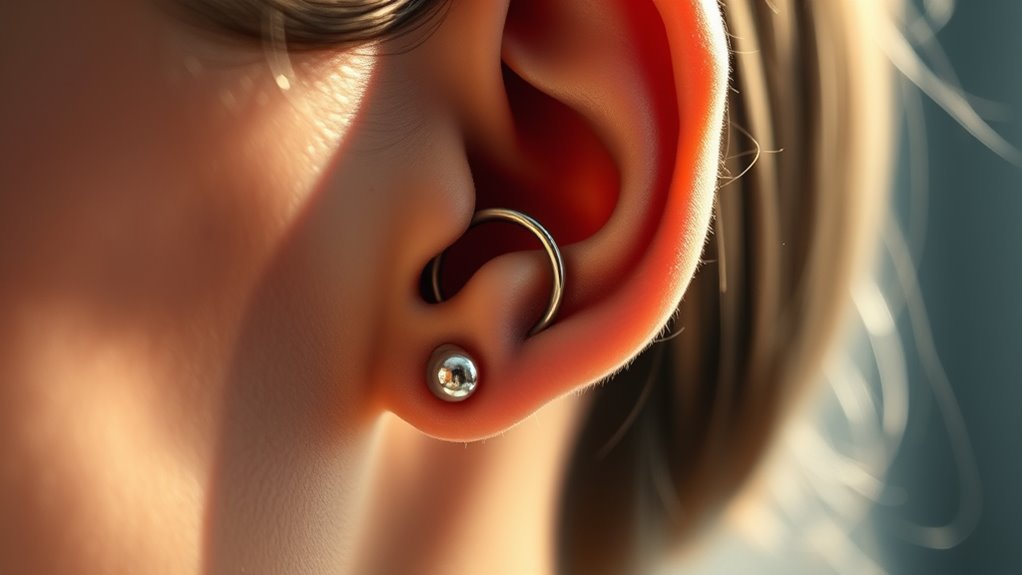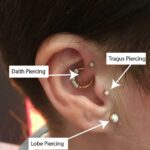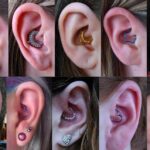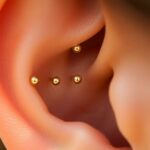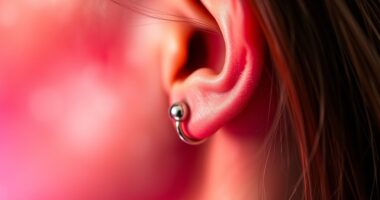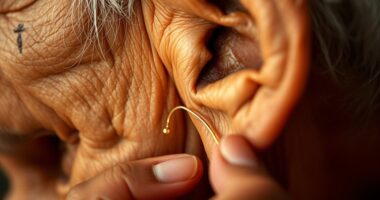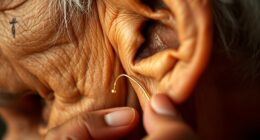Daith piercings went viral mainly due to social media hype, personal success stories, and their connection to traditional ear acupuncture, which many believe can relieve migraines or headaches. Influencers and users share their positive experiences, creating a sense of hope and community. However, scientific research doesn’t strongly support these claims, and results vary between individuals. If you’re curious, you’ll discover more about what the latest evidence and expert opinions say.
Key Takeaways
- Social media posts and influencer success stories popularized daith piercings as a headache remedy.
- The practice is linked to traditional Chinese ear acupuncture, believed to influence pain pathways.
- Scientific research on the effectiveness of daith piercings for migraines remains limited and inconclusive.
- Personal testimonials and online sharing create a sense of community and hope, fueling the trend.
- Experts advise caution, emphasizing that results vary and highlighting potential risks like infection.

Daith piercings have recently gone viral, capturing widespread attention across social media platforms. You’ve probably seen countless posts and videos claiming that this tiny jewelry piece can do wonders for headaches or migraines. Many people share their personal stories about how getting a daith piercing has helped them find relief from chronic pain, often comparing it to ear acupuncture. This comparison isn’t accidental; both practices target specific points on the ear, which is believed to influence other parts of your body. The idea that a simple piercing could serve as a form of ear acupuncture is intriguing, and it’s likely one reason why so many are curious about trying it.
Daith piercings are trending as a natural remedy for migraines, linked to ear acupuncture practices.
You might wonder why people are so convinced that a daith piercing can help with migraine relief. The concept stems from traditional Chinese medicine, which views the ear as a microsystem reflecting the entire body. By stimulating certain points—like the daith area—some believe you can influence nerve pathways associated with pain. The piercing essentially acts as a long-term, passive form of ear acupuncture, keeping these points constantly stimulated. While this sounds promising, it’s important to remember that scientific evidence supporting these claims remains limited. Additionally, understanding the ear microsystem can shed light on why such practices are popular in alternative medicine. Still, the anecdotal accounts are convincing enough that many are willing to try it, hoping for relief when other treatments haven’t worked.
You should also consider the role of social media in fueling the trend. When influencers and everyday users share their success stories, it creates a sense of community and hope. People are enthusiastic for alternative remedies, especially those that seem simple and natural. The viral nature of these stories amplifies the idea that a daith piercing could be a game-changer for migraine sufferers, even if clinical studies are scarce. This buzz can lead you to believe that if others have found relief, maybe you will too. However, it’s worth approaching with caution. While some report positive results, others see no benefit, and there’s always the risk of infection or complications with piercings.
Ultimately, the surge in popularity is a mix of traditional practices like ear acupuncture, modern social media influence, and personal testimonials. If you’re considering a daith piercing for migraine relief, it’s wise to consult with healthcare professionals and understand that individual results vary. Although the idea is appealing, scientific backing remains limited, so keep an open mind and prioritize safe, evidence-based treatments alongside your curiosity about this viral trend.
Frequently Asked Questions
Do Daith Piercings Actually Cure Migraines?
You might wonder if daith piercings actually cure migraines. While some believe they help through alternative therapies, scientific evidence remains limited. Many people experience relief due to placebo effects rather than a direct physical impact. It’s important to remember that individual responses vary, and consulting a healthcare professional is best. Relying solely on daith piercings isn’t a proven migraine cure, but they could be part of a broader treatment plan.
Are Daith Piercings Safe for Everyone?
You might wonder if daith piercings are safe for everyone. While piercing safety varies based on individual health, not everyone should get them, especially if you have allergies or skin conditions. Body modification ethics emphasize choosing reputable professionals who follow hygiene standards. Always weigh risks and benefits, and consult with a professional to guarantee your piercing aligns with your health needs. Remember, safety is key in any body modification.
How Long Does a Daith Piercing Take to Heal?
When you get a daith piercing, the healing timeline usually takes about 6 to 8 weeks, but it varies. For example, if you follow proper aftercare tips like cleaning regularly and avoiding touching it, healing can be smoother. During this time, watch for signs of infection. Keep it clean and avoid irritating activities to help your piercing heal faster and prevent complications.
Can Daith Piercings Cause Infections or Other Complications?
You might wonder if daith piercings cause infection risks or healing complications. While they can, proper aftercare markedly reduces these risks. If you don’t clean the piercing regularly or touch it with dirty hands, you increase the chance of infection and healing complications. Be aware of redness, swelling, or pain, and consult a professional if issues persist. Taking good care helps prevent complications and promotes smooth healing.
What Is the Cost of Getting a Daith Piercing?
When considering a daith piercing, you should think about the cost considerations involved in piercing procedures. Typically, prices range from $30 to $90, depending on the studio and location. Remember, quality and hygiene are essential, so don’t just go for the cheapest option. Besides the piercing procedure itself, factor in aftercare products and potential touch-ups, ensuring a safe and satisfying experience.
Conclusion
So, next time you see a daith piercing shimmering in the light, remember it’s more than just a trendy sparkle—it’s a viral wave fueled by social media and whispers of relief. While the science is still a murmur in the background, your curiosity can be the compass guiding you through the noise. Whether it’s a fashion statement or a hope for healing, this tiny jewelry piece has become a star in its own right—dancing across the stage of modern culture.
I’m Gillian. I love piercings and tattoos- there’s something about the way they make your body look that just makes me happy. I started this blog to share my passion for piercings and tattoos with the world and to help people who are thinking of getting their first piercing or tattoo.
I’ve been writing about piercings and tattoos for a while now on piercings-body.com. I love sharing my knowledge with others and helping people make informed decisions about their bodies.

